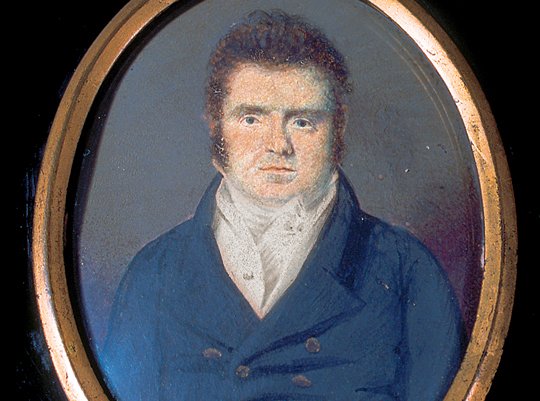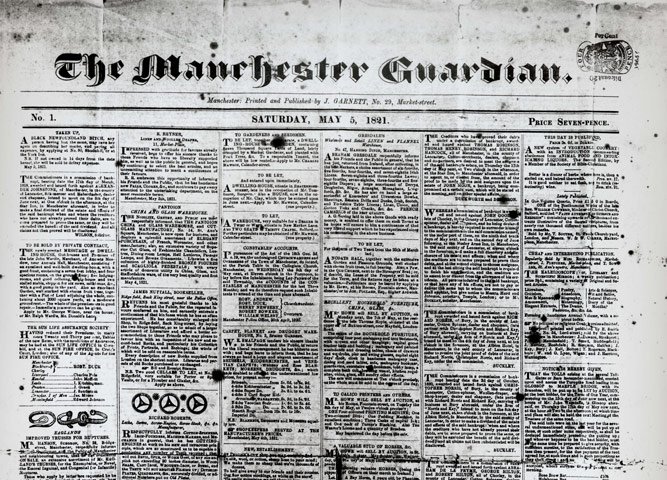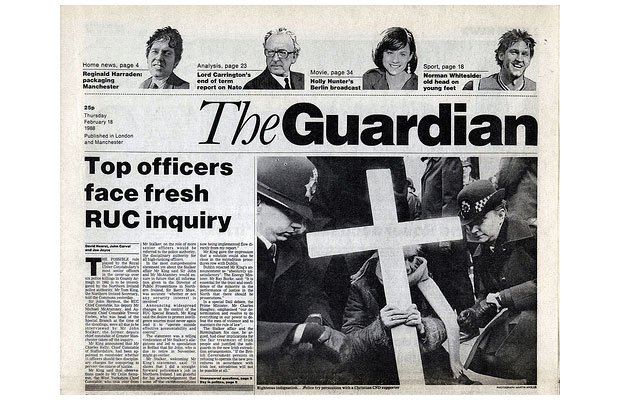
History of the Guardian:
The Manchester Guardian was founded by the cotton merchant John Edward Taylor in 1821 with support from a liberal group of businessmen called “Little Circle” based in Manchester.

The first newspaper was published on 5th May of that year at a price of 7 pence, after the closure of the radical newspaper “Manchester Observer”, which closed after the Peterloo Massacre. So the Manchester Guardian was intended to promote the liberal interests after the Peterloo Massacre, where over 60.000 protestors were assaulted by the Cavalry.
It was published weekly on Saturdays until 1836 when a Wednesday edition was added. In 1855, after the Stamp Duty was abolished, it was finally possible to publish the paper daily, at a price of 2 pence.

Key moments in the Guardian's history:
The first major change was after the death of John Taylor's son. Charles Prestwich Scott, a journalist, and politician, He bought the “Manchester Guardian” in 1905 and promised that the principles from the founders would be protected by keeping the independence of the newspaper.
Later he passed the control over to his two sons John and Edward Scott who made an agreement, that in the event of someone's death, one would buy the other’s share.
1924 John Scott bought the “Manchester Evening News” which is a popular newspaper, that still exists today.
In 1936, JR Scott had the fear, that future death duties would force the closure or sale of the newspaper. So to protect the liberal principles and traditions from future debts, he passed the ownership of the Guardian to the trustees
of “the Scott Trust” in June 1936.
As the Manchester Guardian grew, newspapers like “the Daily Telegraph” and “the Times”
challenged the Guardian.
The limited number of pages in the newspaper, poor quality of the printing and sometimes odd news, that was once recognized as the regional charm of the newspaper, should now compete with the big newspapers on the Street.
(the newspaper also costs 1 pound more a day)
in 1959 they omit the Manchester in their name and became “the Guardian” because there were more reader outside of Manchester than inside.

The editors of the newspaper moved to London in 1964, and shortly afterwards financial problems came ahead. The newspaper relied heavily on the “Manchester Evening News” for financial support, and in the mid-60s the financial problems grew so much, that the possibility of a merger was discussed. The Times was in a similar financial situation, and many were of the opinion that only one could stay. In the end, the talks came to nothing.
Investment in printing and improved offices in London in 1976, followed by an expansion programme, helped strengthen the Guardian’s position. In the increasing one directional political climate of the late 70s and early 80s, the Guardian’s had a position as “the voice of the left” which was unchallenged.

In 1986 by the launch of the morning newspaper “the Independent” the status of the Guardian was permanently changed.
Gaining control over the centre ground between the Guardian on the left and the Times and Telegraph on the right, the Independent attracted readers with a modern design and distribution network.
In 1988 the Guardian made a bold and innovative attempt to take its position on Street back, with a redesign.

In 1993 the prices of other newspapers like the Times and Daily Telegraph decreased, this lead to losses as they battled to survive.
Throughout this period the Guardian remained at full price, investing in journalism and distancing itself from the price war with development and consistently breaking stories.
In 1994-95 the Guardian began online his online presence. By March 2001 Guardian had over 2.4 million users, making it the most popular newspaper website in the UK.
In December 2008 the newspaper moved to a new building in King’s Cross after 32 years in its Farringdon headquarters.
In 2011 the Guardian’s was named “Newspaper of the Year” for its partnership with WikiLeaks.